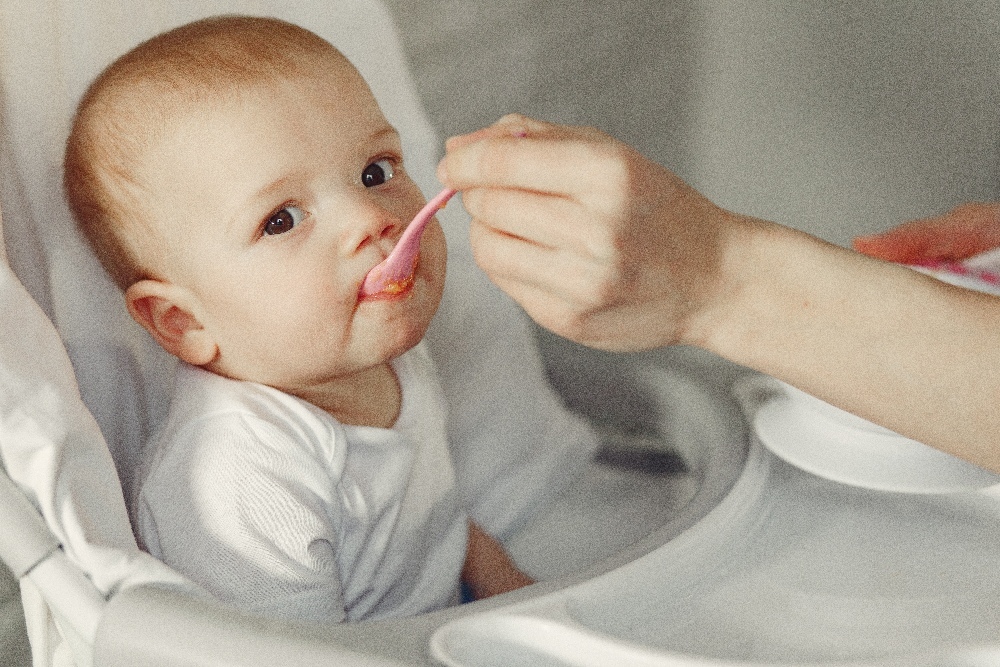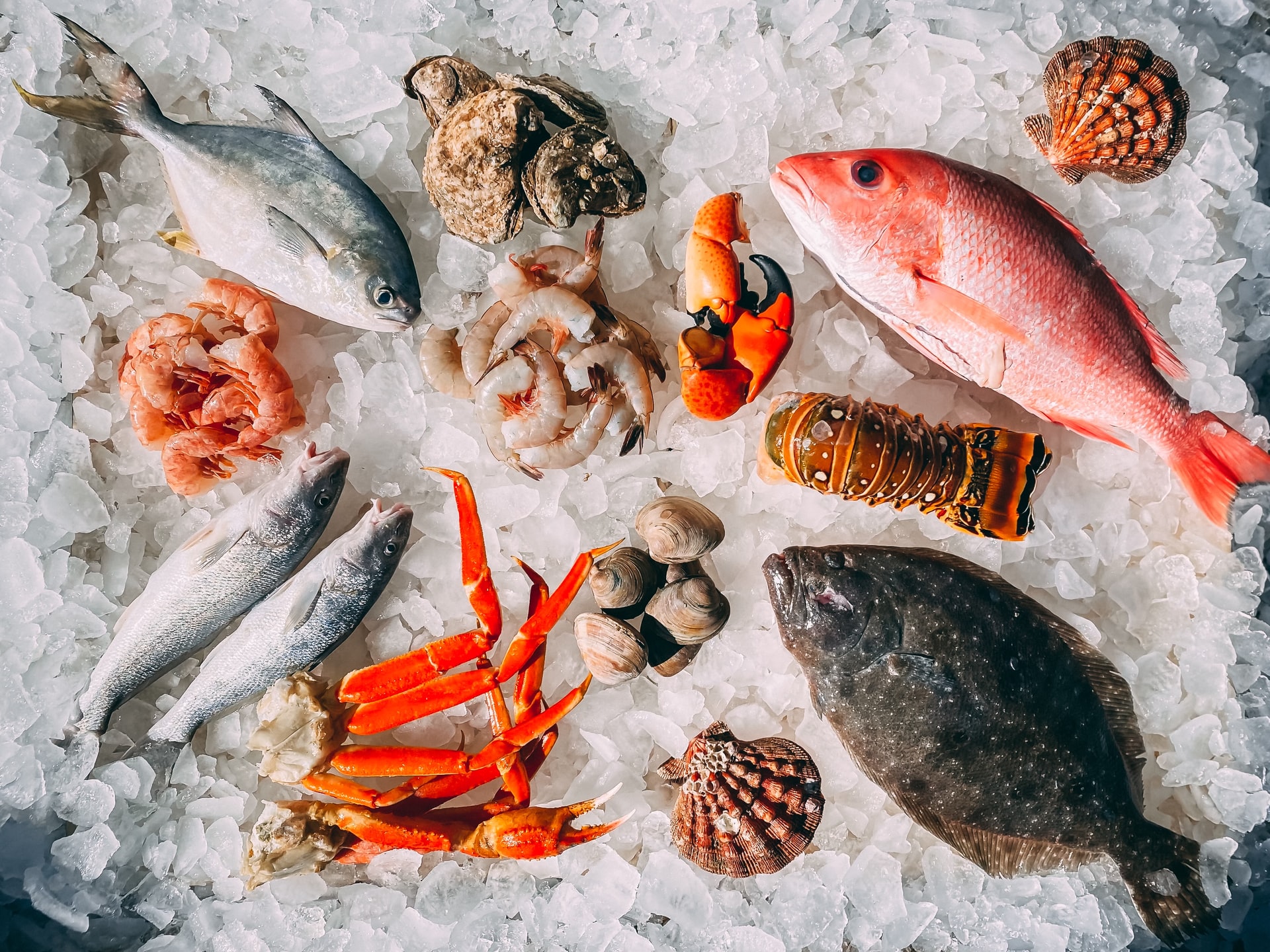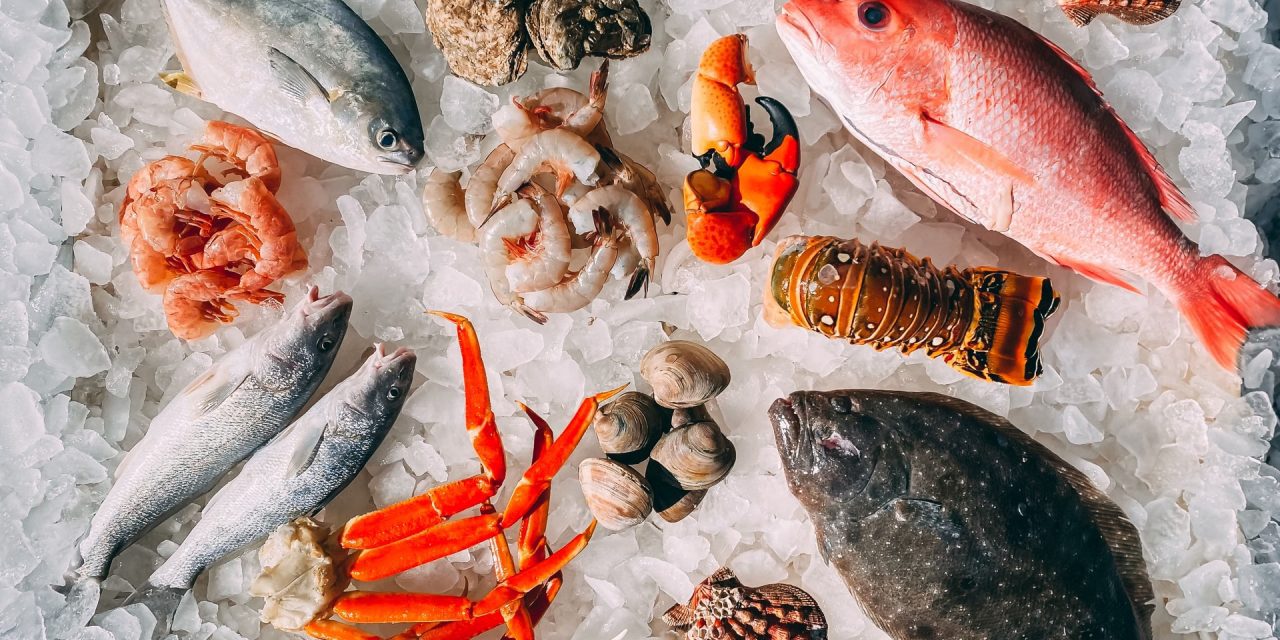One thing we always worry about as parents is our child’s nutrition. We look up online forums, read various magazines just to find out which nutritious diet plans would be deemed best for our child. When it comes to proteins, we think of the classic milk, cheese, and yogurt as the only administrators. But not many have recognized the protein value seafood has – more benefits than harm, of course! Think your child deserves an added source of protein in their diet? Keep reading our guide to introducing seafood to babies for an in-depth view of the topic.

Seafood can add a lot of nutritional value to your child’s health, especially when you introduce it at the right age.
Benefits Of Seafood For Babies
The benefits of seafood for your child are huge. They provide the right amount of nutrients that are necessary for the child’s physical and mental development. Rich in omega 3 fatty acids and vitamins B-6, B-12, and D, they help in promoting better bone development and aid in enhancing the immune system as well. These nutrients are necessary for your child since they reduce the chances of developing a chronic condition in the long run.
Improves Brain Power
Seafood is among the brain foods that facilitate better brain development. Since our brain is approximately 60% fat, the essential omega 3 fatty acids present in seafood help the brain to function efficiently. Additionally, these fatty acids also aid in memory development. Sooner or later, your child will go to school and they’ll require all the brainpower possible to get those grades. Therefore, an increase of gray matter is required, which is made possible due to seafood’s omega 3 content. More gray matter helps in reducing the risk of contracting any memory-related diseases like dementia or Alzheimer’s. Also, research proves that those who include fish at least once a week in their diet have better emotional stability.
Healthier Eyes
Here is where the omega 3s show their truest potential. They not only enhance eye development but also regulate the light detecting structure. Since nearly half of the light-detecting structure is made up of omega 3s, introducing seafood to babies for better infant vision development will be a wise choice.
Better Bone Health
Very few foods have rich vitamin D content and this nutrient is necessary to strengthen bones and teeth. Fish, especially salmon and sardine, are rich in this nutrient that helps in absorbing calcium and phosphorus for better bone development.
When Can Your Baby Start Eating Seafood
Seafood can be introduced as part of your baby’s solid food diet plan usually when they’re 6 months old. However, it’s always better to consult your pediatrician first before going ahead with the plan since seafood can be an allergen. Therefore, it’s better that you introduce other solid foods such as cereals, vegetables, and homemade items before progressing with seafood. If there’s no reaction, then it may be safe to go ahead with a seafood diet. However, if your child has a history of mild to severe reactions, it’s better to wait a little longer than 6 months and follow your doctor’s instructions to reduce the risk.
Always remember to wait a few days when introducing new food to your child for the first time since allergic reactions can sometimes take time to develop. This way, you’ll know whether your child is allergic to a type of seafood or just seafood in general. Also, never introduce seafood to your child in a place other than home. Better to be safe than sorry.
How To Introduce Seafood In Your Baby’s Diet
Any new solid food has to be administered slowly and with caution. Similarly, in the case of seafood, start by introducing small quantities of mashed seafood and check if your child digests it. Ensure that the fish is thoroughly cleaned and de-boned. Even after you’ve mashed the fish, check again for bones; you don’t want to increase the risk of choking in your infant.
Preferably, it’s better to introduce one type of fish rather than a whole variety. If you’re introducing sardines, stick with sardines for a while and see how your child reacts to them. Offer it as a single ingredient dish first and once your child has gotten used to the taste, you can start blending it with other ingredients too. Try fish with some mashed vegetables such as potatoes, peas, and carrots for more nutritious value. You could also mix seafood with rice, lentils, and other cereals for variation in taste.
Baked fish, provided they’re de-boned and pureed, is another great way of adding interest to the food. However, when it comes to shellfish, you’ll have to be a bit more careful. Select the ones that are easily blendable such as lobster or crab.
Type Of Fish Food To Avoid Feeding Your Baby
Not all food items are good for children, there are some foods that you should avoid giving children as much as possible. Larger fish, particularly swordfish and sharks, contain high levels of mercury. They can be fatal to your child’s central nervous system. Fish that is partially cooked and raw have to be avoided at all costs. A healthy adult would have the stomach to digest but not an infant since its immune system is still in development. Finally, avoid any type of canned seafood because of its high salt content.
Signs Of Allergy
When a child undergoes an allergic reaction, usually they’ll have intense crying episodes. This tends to happen even before the symptoms appear, so take note of any incessant crying. These are other signs that you need to watch out for after introducing seafood to your baby that we’ve listed below. Whether the reaction is mild or severe, take your child to the nearest doctor as soon as you see it.
- Skin rashes
- Difficulty in breathing
- Stomach pain
- Vomiting and diarrhea

Be mindful of choosing the right sources when introducing seafood to babies.
Conclusion
We hope we were able to guide you through the process of introducing seafood to babies. Keep in mind that you have to take care of certain precautions, which we’ve discussed in length in our article. However, if you need even more information about the subject, you can book a one-on-one consultation (online or in clinic) appointment on our ImmunifyMe app. Choosing your favorite pediatrician from the comfort of your room has never been easier.
FAQs On Guide To Introducing Seafood To Babies
How Do I Introduce Seafood To My Baby?
Start slowly. Before introducing seafood, your baby should be able to digest solid foods first. After that’s done and there’s no reaction, mash the fish and introduce it as a single ingredient dish first. Later, introduce other food items such as pureed vegetables along with the mashed fish. If there is any allergic reaction, take your baby to the nearest doctor immediately.
When Can Babies Start Eating Seafood?
For most babies, its fish can be introduced within 6 months. For seafood that is slightly harder to chew (shrimp), try waiting for a little longer than 6 months. Preferably, after your child’s first birthday.
What Fish Should I Introduce To My Baby First?
Seafood having low mercury levels, and easily de-boneable should be introduced first. You can start with any of the types of fish in the list below, but remember to stick to just one variety while introducing.
- Tuna
- Pomfret
- Sardine
- Salmon
- Shellfish – Crab, Lobster






